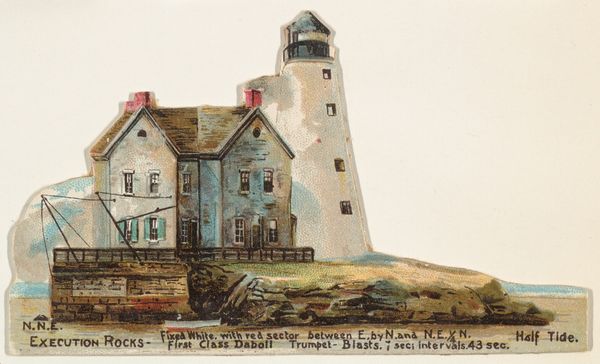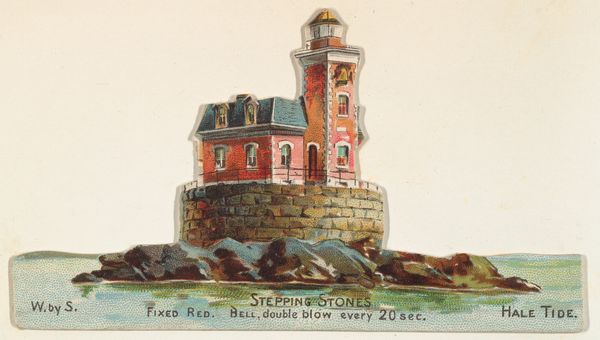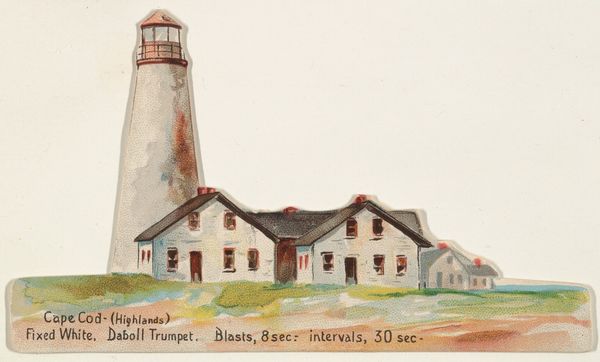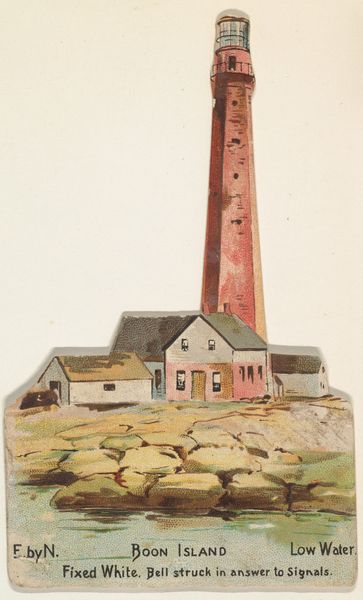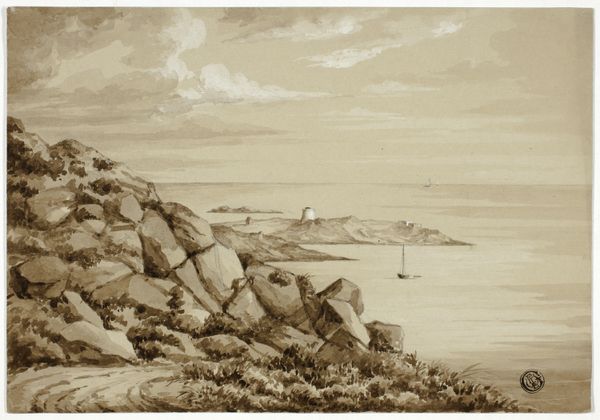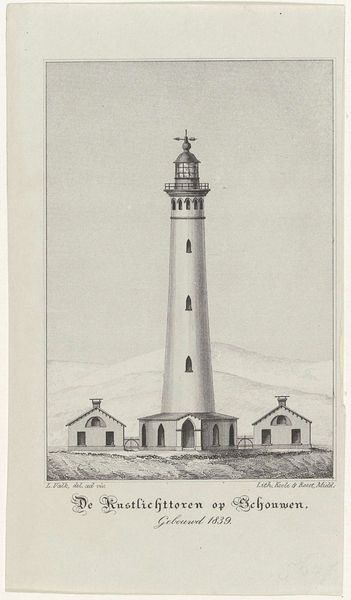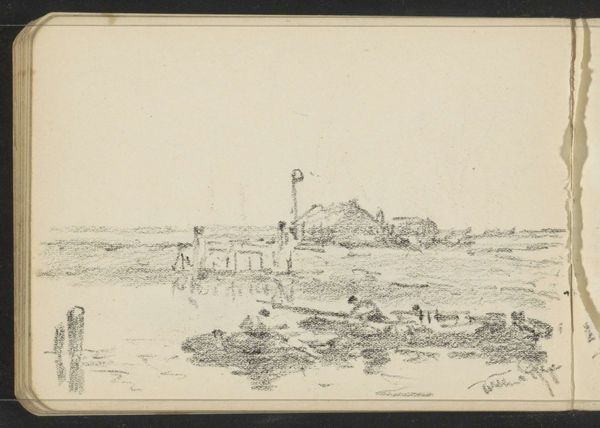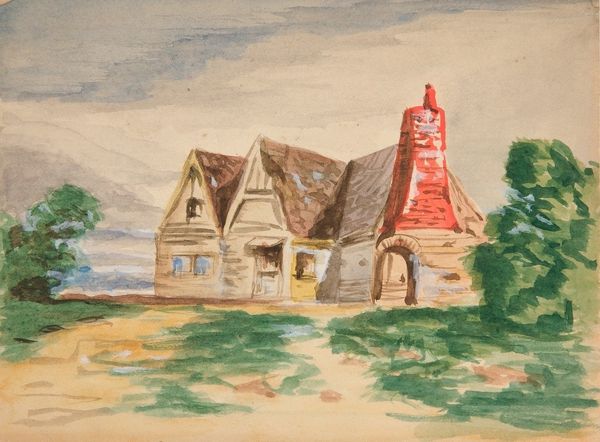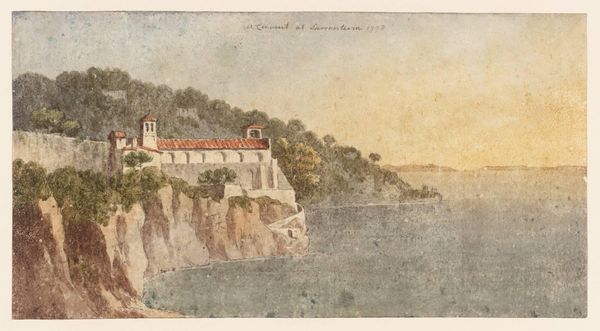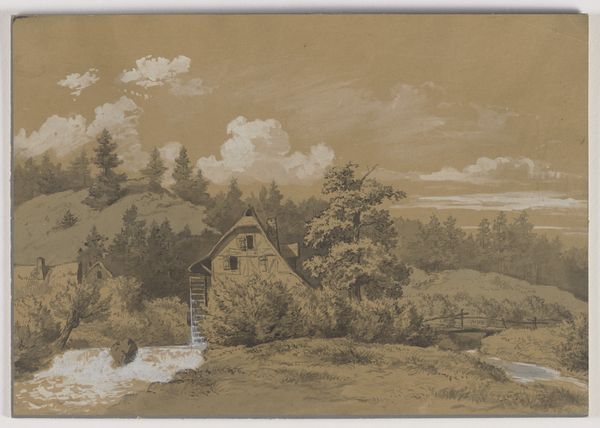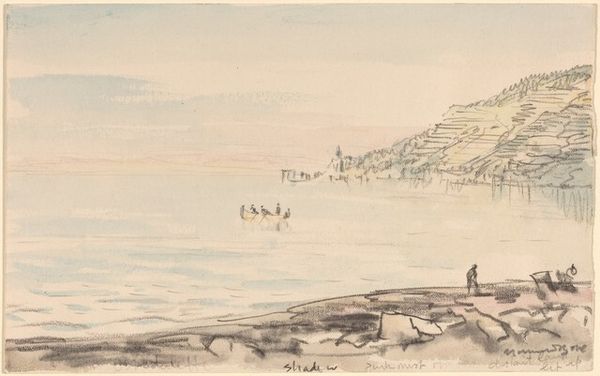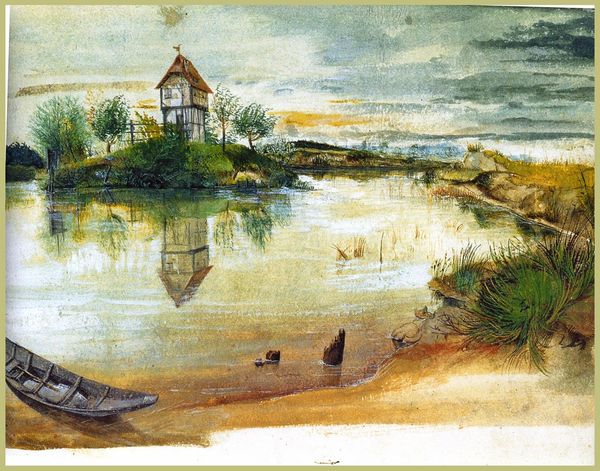
Stratford Shoal, from the Lighthouses series (N119) issued by Duke Sons & Co. to promote Honest Long Cut Tobacco 1889
0:00
0:00
drawing, print, gouache, watercolor
#
gouache
#
drawing
# print
#
gouache
#
landscape
#
watercolor
#
watercolour illustration
#
academic-art
Dimensions: Sheet (Irregular): 2 7/16 × 4 1/8 in. (6.2 × 10.4 cm)
Copyright: Public Domain
Curator: Immediately striking, isn’t it? This little watercolour illustration has a sense of naive optimism about it. The colours are muted, almost pastel, but there’s such clear detail given to the stone and the construction of the lighthouse. Editor: Absolutely. This is "Stratford Shoal, from the Lighthouses series," created around 1889 by W. Duke, Sons & Co. It's more than just a landscape; it's a trade card designed to promote Honest Long Cut Tobacco. It makes me wonder about the audience and how industrial capitalism found new inroads by associating their products with sentimental imagery like lighthouses, images representing hope, guidance, and, safety. Curator: Precisely. Tobacco cards were essentially miniature canvases of material culture. Note the gouache, watercolor and printmaking involved – a clear connection to craftsmanship employed towards mass production and popular consumption. The means of making the image itself become a point of entry into considering how it reached its audience. Editor: That’s true. By framing this as both “art” and advertising, we can dig into some important cultural insights. Tobacco was deeply entrenched in 19th-century social rituals. It also had very specific intersections with class, gender, and race—given the exploitative labor systems involved. Promoting the image of the sturdy, steadfast lighthouse served to align the tobacco brand with virtues of dependability and safety. Curator: Look, also, at the lithographic process: it’s a highly reproducible, democratized method of artistic distribution, much more efficient than hand-painting such a design. The very availability of these images meant that visual literacy and art consumption became far more widespread across society. Editor: Exactly, these weren’t just images of lighthouses; they were images packaged and consumed within complex cultural contexts. When considering identity formation, ideas around nationhood, industrial growth, we need to see art objects like these cards as pivotal pieces in broader societal processes of the time. Curator: So, on one level, this work speaks to the mechanics of production and consumption inherent in popular printmaking and capitalist distribution, reflecting not just light, but industrial lights illuminating commerce. Editor: On another, it calls to awareness the complicated, messy relationship between visual imagery, power structures, and even something as small as a tobacco card. Hopefully we will be motivated to interrogate similar power dynamics today.
Comments
No comments
Be the first to comment and join the conversation on the ultimate creative platform.
